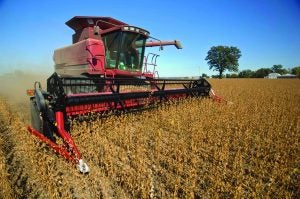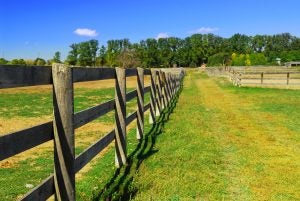The year 2021 has been a whacky one indeed, where price volatility and yield predictions bounced about the charts like popcorn in a microwave. With U.S. corn prices bopping over $6 per bushel by June 30, and now around $5.58 as September begins, many a producer has spent the year awash with mixed emotions, all the while noting that neither prices nor yields have been this high in years.
Meanwhile, the cost of inputs also saw dramatic leaps over years prior, with the price of lumber more than tripling this year compared with years pre-COVID-19. But to fully understand the impact on producers and consumers alike, one really has to see the numbers.
Certainly, every sector of the economy has seen its share of change this year and last due to the COVID-19 pandemic. But there’s no question all things ag touch every sector too. Below we offer a year-over-year breakdown of ag-related prices to demonstrate just how wild 2021 has been.

Soybeans
One of the United States’ chief exports, the bean used in everything from feed to fuels has seen big swings throughout the year as China ramped up its demand. Consider the U.S. Department of Agriculture’s data points, compared to the Aug. 31, 2021 Nasdaq price of $13.23 per bushel.
- September 2020 soybeans – $9.24
- September 2019 soybeans – $8.35
- September 2018 soybeans – $8.78
Corn
The combination of bad weather in South America’s corn belt and a lingering swine virus in China resulted in the world’s most populous nation upping its order from the U.S. this spring. With prices popping over $6 before July, the price for corn finally settled on $5.58 per bushel at the end of August:
- September 2020 corn – $3.40
- September 2019 corn – $3.80
- September 2018 corn – $3.40
As an additional aside, the last time corn prices broke $5 was 2013, at $5.40 that September.
Wheat
Wheat prices likewise were bumped higher this year. The end of August 2021 brought CBOT wheat prices of $7.23 per bushel.
- September 2020 wheat – $4.73
- September 2019 wheat – $4.26
- September 2018 wheat – $5.15

Lumber Prices
Another key component to the ag industry most people ignore until prices spike is lumber. Many barns went unbuilt as wood prices skyrocketed up to $1,688 per 1,000 board feet on May 5, 2021. Nearly three times the cost of years before COVID, the price of lumber no doubt had a huge impact on commercial, residential, and farm building.
- May 5, 2020 – $960 per 1,000 board feet
- May 6, 2019 – $460 per 1,000 board feet
- May 6, 2018 – $460 per 1,000 board feet
Ag Fertilizers
Unfortunately, with the hike in crop prices so comes the rise in input costs. The USDA reports a healthy jump in costs this year, with July 2021 fertilizer price indexes hitting 82.4.
- September 2020 Fertilizer Index – 65.10
- September 2019 Fertilizer Index – 69.90
- September 2018 Fertilizer Index – 66.50
Ag Supplies and Repairs
The price of farm-related fix-ups also spiked to a USDA-recorded index of 126.30 by July 2021.
- September 2020 Supplies/Repairs – 116.80
- September 2019 Supplies/Repairs – 115
- September 2018 Supplies/Repairs – 113.30
Diesel Fuel
Whether hauling grain in a truck or preparing for planting season, producers around the country faced steeper fuel costs this year over last. According to the U.S. Energy Information Administration, diesel prices were significantly higher due to demand. The August 30, 2021 national average hit $3.339 per gallon, its highest mark in several years.
- Aug. 31, 2020 – $2.441
- Aug. 26, 2019 – $2.983
- Aug. 27, 2018 – $3.226
Good news and bad news
The good news of course is that producers are expecting top yields this year from crops set to receive record high prices. The bad news though is that input costs went right along for the ride.
Growing forward, America’s producers can expect strong demand for their products both here and abroad. That said, everyone around the world is hoping for a break on costs. Attributed to a perfect storm of weather, demand, and logistical problems left over from the quarantine, as wild a ride as 2019 might not be seen again for many years to come.
Brian Boyce is an award-winning writer living on a farm in west-central Indiana. You can see more of his work at http://www.boycegroupinc.com/.



